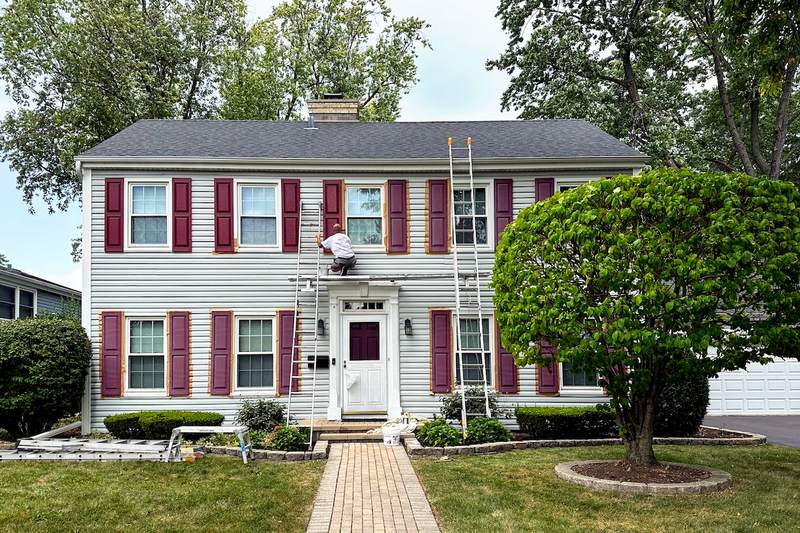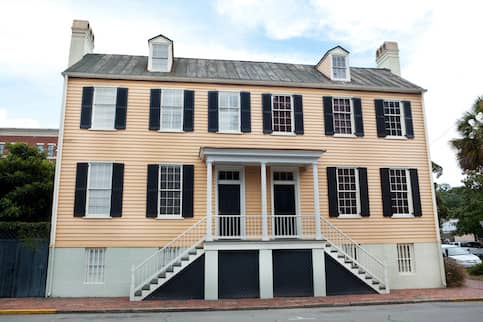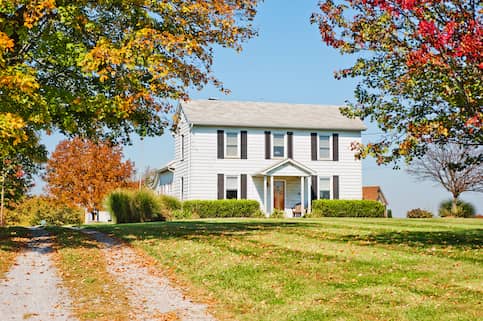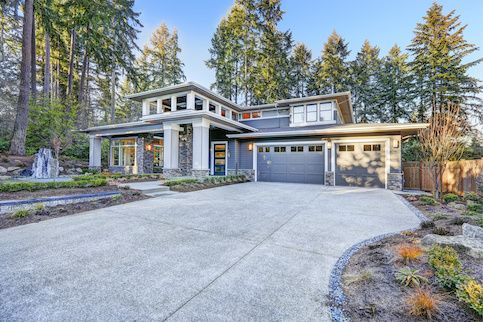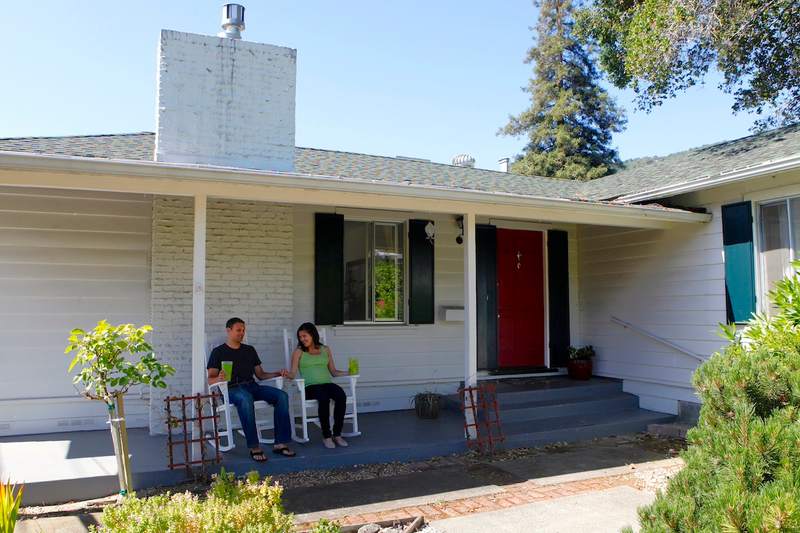Buying a home is expensive – even more so if it needs renovations and repairs. The Federal Housing Administration offers 203(k) loans to help home buyers borrow funds to buy and fix up a property that needs it. FHA 203(k) loans are backed by the federal government and have generous financial requirements that make them an option many aspiring buyers can consider.
Key Takeaways:
- FHA 203(k) loans allow borrowers to buy or refinance a home and pay for renovations with one mortgage.
- FHA 203(k) loans can be used to pay for major or minor upgrades and offer many of the perks that make FHA mortgages affordable.
- Only certain types of homes are eligible, and FHA 203(k) loans can only be used for certain types of renovations.
What Is An FHA 203(k) Loan?
An FHA 203(k) loan – also known as a 203(k) renovation or reconstruction loan – lets home buyers buy or refinance a home and pay for renovations with a single long-term fixed-rate or adjustable-rate mortgage.
“An FHA 203(k) loan is a renovation loan used to help remodel a home or bring a property up to proper health and safety standards,” says Evan Luchaco, a home loan specialist at Churchill Mortgage in Portland, Oregon.
Lenders usually won’t allow buyers to borrow more than a home’s appraised market value. But an FHA 203(k) allows you to borrow more than the appraised value and use the additional funds to pay for renovations on a home that’s at least a year old. The renovation portion of the loan is placed in an escrow fund, with half released to begin work and the rest when it’s completed.
FHA 203(k) loans have low down payment requirements, and borrowers can qualify with a credit score of at least 500. FHA 203(k) loans also benefit lenders because they are insured before the renovations are completed.
What’s Your Goal?
Buy A Home
Discover mortgage options that fit your unique financial needs.

Refinance
Refinance your mortgage to have more money for what matters.
Tap Into Equity
Use your home’s equity and unlock cash to achieve your goals.
Types Of FHA 203(k) Loans
FHA 203(k) loans come in two types: standard and limited.
Standard FHA 203(k) Loans
Standard FHA 203(k) loans are intended for significant repairs or rehabilitation work on a single-family home. A 203(k) loan lets you borrow as much as the FHA loan limit for that area, with anything over the purchase price or refinance amount available for rehabilitation costs. At least $5,000 must be used for rehabilitation.
For example, say you find a home for sale for $300,000 that needs $30,000 in major repairs. You could get a 203(k) loan for $330,000, with $30,000 placed in escrow. Funds are released to the contractor as repairs are completed and approved by a U.S. Department of Housing and Urban Development-approved consultant until all the work is done.
Limited FHA 203(k) Loans
Limited FHA 203(k) loans – sometimes called Streamline 203(k) loans – are intended for less expensive and extensive repairs. Homeowners can finance up to $35,000 in addition to the purchase price or refinance amount to pay for repairs, improvements or upgrades. These loans make it simple for home buyers to access cash to cover nonstructural repairs and minor remodeling. While standard 203(k) loans require borrowers to work with a HUD-approved consultant, it’s optional for limited loans.
Limited FHA 203(k) loans often are used by home buyers who want to make improvements to a home before they move in or homeowners who want to fix up their home before selling it.
Standard Vs. Limited FHA 203(k) Loans
| Loan Type | Eligible Projects | Minimum Amount For Improvements | Total Loan Limit |
|---|---|---|---|
| Standard FHA 203(k) | Major renovations | $5,000 | FHA county limit |
| Limited FHA 203(k) | Minor upgrades | None | Up to $35,000 for improvements; FHA county limit for total loan |
Ready To Become A Homeowner?
Get matched with a lender that can help you find the right mortgage.
How Can You Use An FHA 203(k) Loan?
FHA 203(k) loans can be used to rehabilitate the following types of properties:
- Single-family homes
- Single-family homes with eligible accessory dwelling units
- Eligible condominiums and site condo units
- Two- to four-unit townhouses
- Manufactured homes titled as real estate
- HUD homes
- Mixed-use properties that are at least 51% residential
Here are some of the eligible home improvements that you can finance with an FHA 203(k) loan:
- Remodeling the kitchen or bathrooms
- Bedroom additions
- Finishing the basement
- New flooring
- Septic unit installation
- Building a porch
- Energy-efficient upgrades
- Meeting FHA minimum property requirements
- Repairing, rebuilding or lifting the foundation
- Rebuilding a demolished structure
- Structural repairs
- Repairing or replacing plumbing, electrical, heating or cooling systems
- Improving or modernizing home systems
- Repairing or constructing a garage
- Repairing or installing new roofing, siding or gutters
Take The First Step To Buying A Home
Find a lender that will work with your unique financial situation.
How Do FHA 203(k) Loans Work?
The process of getting an FHA 203(k) is broken into three stages: origination, repair and improvements, and completion.
Origination Stage
The origination stage is the process of getting the 203(k) loan. Here are the steps to take:
- Find a fixer-upper home.
- Contact an FHA-approved lender for a 203(k) loan.
- The lender assigns a HUD-approved consultant.
- Consultant visits the home and works with the buyer to estimate costs.
- Submit a repair plan and bids to the lender.
- Lender underwrites, processes and closes the loan.
- Lender submits the loan for endorsement.
- FHA insures the loan.
- Renovations begin.
Repair And Improvements Stage
During the next phase, the contractor gets involved. Here’s what you can expect:
- Contractor obtains the necessary permits.
- Contractor begins repairs and improvements.
- Contact the 203(k) consultant to request an inspection for a draw release.
- Work with the consultant to inspect the work.
- Consultant certifies the work is satisfactory.
- Sign the draw release and submit it to the lender for payment.
- Lender issues a two-party check made payable to both you and the contractor.
- This process is repeated until all the work is completed.
Project Completion Stage
Once all the work has been completed, here are the final steps:
- Provide a release letter to your lender indicating the work has been completed.
- Consultant verifies completion.
- Consultant obtains a certificate of occupancy or building permit close-out approval.
- Remaining escrow funds are released.
- Lender closes out the project with the FHA.
Requirements For FHA 203(k) Loans
To qualify for an FHA 203(k) loan, you’ll need to meet the following requirements:
- The home needs to be your primary residence.
- Proof of income and employment
- Credit score of at least 500
- Down payment of at least 3.5% with a credit score of at least 580, 10% with a score between 500 and 579
- Total of your mortgage and the repair costs must fall within FHA limits
- Maximum debt-to-income ratio of 45%
- Upfront mortgage insurance fee of 1.75% of the purchase price
- Recurring mortgage insurance premium of 0.45% to 1.05% of the loan amount
- Must use a HUD-approved contractor
Pros Of FHA 203(k) Loans
FHA 203(k) loans come with a variety of perks, including:
- Lower credit score requirements
- Down payment as low as 3.5%
- Lower income requirements
- Interest rates are often lower than other types of loans.
- You’ll have a single payment for your mortgage and renovations.
- You can avoid draining your savings to cover renovations.
- Lower closing costs than other types of loans
- You can claim a larger tax deduction by combining home purchase interest and renovation interest.
- Sellers can contribute up to 6% of the purchase price.
Cons Of FHA 203(k) Loans
FHA 203(k) loans also come with downsides, such as:
- They can only be used for primary residences.
- You’ll have to pay an upfront and ongoing mortgage insurance premium.
- Luxury renovations don’t qualify.
- You must meet credit score and income requirements.
- A down payment is required.
- A down payment of 10% is required if your credit score is less than 580.
- There can be up to a two-year waiting period if you’ve declared bankruptcy.
Can You Refinance With An FHA 203(k) Loan?
Yes, homeowners can use FHA 203(k) loans to refinance their existing mortgage if they plan to make improvements to the home. This can be useful for homeowners who want to avoid losing equity from a cash-out refinance or taking on a second monthly payment with a home equity loan.
Should I Get An FHA 203(k) Loan?
An FHA 203(k) loan can be a good option for buyers who plan to renovate the home once they move in. That way, they only need to make one monthly payment and avoid draining their savings or racking up high-interest credit card balances to pay for renovations. This type of loan also can make sense for current homeowners who are planning to refinance and renovate but perhaps don’t have enough equity for a cash-out refinance.
“203(k) loans are great for home buyers looking to purchase a home at below market value in need of work,” Luchaco says. “They are also a great option for current homeowners who are looking to make significant upgrades to their home.”
FAQ
Here are answers to some frequently asked questions about FHA 203(k) loans:
The Bottom Line
FHA 203(k) loans can help home buyers buy a fixer-upper and fix it up. Because the loans are government-sponsored, they have looser eligibility requirements and don’t require a large down payment. Just keep in mind that you can only use a 203(k) to fund certain types of renovations and that the property must be your primary residence.
More From Quicken Loans:

Rory Arnold
Rory Arnold is a Los Angeles-based writer who has contributed to a variety of publications, including Quicken Loans, LowerMyBills, Ranker, Earth.com and JerseyDigs. He has also been quoted in The Atlantic. Rory received his Bachelor of Science in Media, Culture and Communication from New York University. He also completed the SoFi/Coursera Fundamentals of Personal Finance Specialization consisting of five courses: Introduction to Personal Finance, Saving Money for the Future, Managing Debt, Fundamentals of Investing, and Risk Management in Personal Finance.
